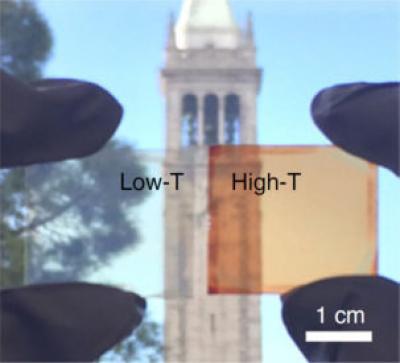Lawrence Berkeley National Laboratory (Berkeley Lab) researchers have manipulated the chemical structure of perovskite so that the material turns from transparent to opaque when heated and also converts sunlight into electricity. This ability may lead to applications like windows that automatically tint on a sunny day to block the heat while also generating electricity, power-producing smart windows for buildings, cars and display screens, and more.

While the sunlight conversion efficiency of the material (an inorganic halide perovskite with added cesium, lead, iodine and bromine) is still low and the transition from transparent window to opaque solar cell requires heating the window to the boiling point of water, the team is already working on versions that work at lower temperatures and with higher conversion efficiency. The new material is reportedly able to retain its conversion efficiency after many cycles between transparent and a reddish tint.
'The chemical stability improved dramatically, but unfortunately the phase was not stable,' said the team. 'It transformed into the low-T [temperature] phase. It was a drawback, but then we turned it into something that's unique and useful.' The material is triggered to transition from the low-T to high-T phase (or from transparent to non-transparent) by applying heat.
The team said moisture, or humidity, was used in the lab to trigger the reverse transition. 'The amount of moisture needed depends on the composition and the transition time desired'. 'For example, more bromide makes the material more stable, so the same humidity would require longer time to transform from the high-T to low-T state'. The researchers will also continue to work on developing alternative ways to trigger the reverse transition, such as by applying voltage, or engineering the source of the moisture.
The research was supported by DOE's Office of Science. Other co-authors of the paper are from UC Berkeley, Stockholm University, and Lawrence Livermore National Laboratory. The Stanford Synchrotron Radiation Lightsource at SLAC National Accelerator Laboratory and the Advanced Light Source at Berkeley Lab, both DOE Office of Science User Facilities, were used to collect some of the data.

